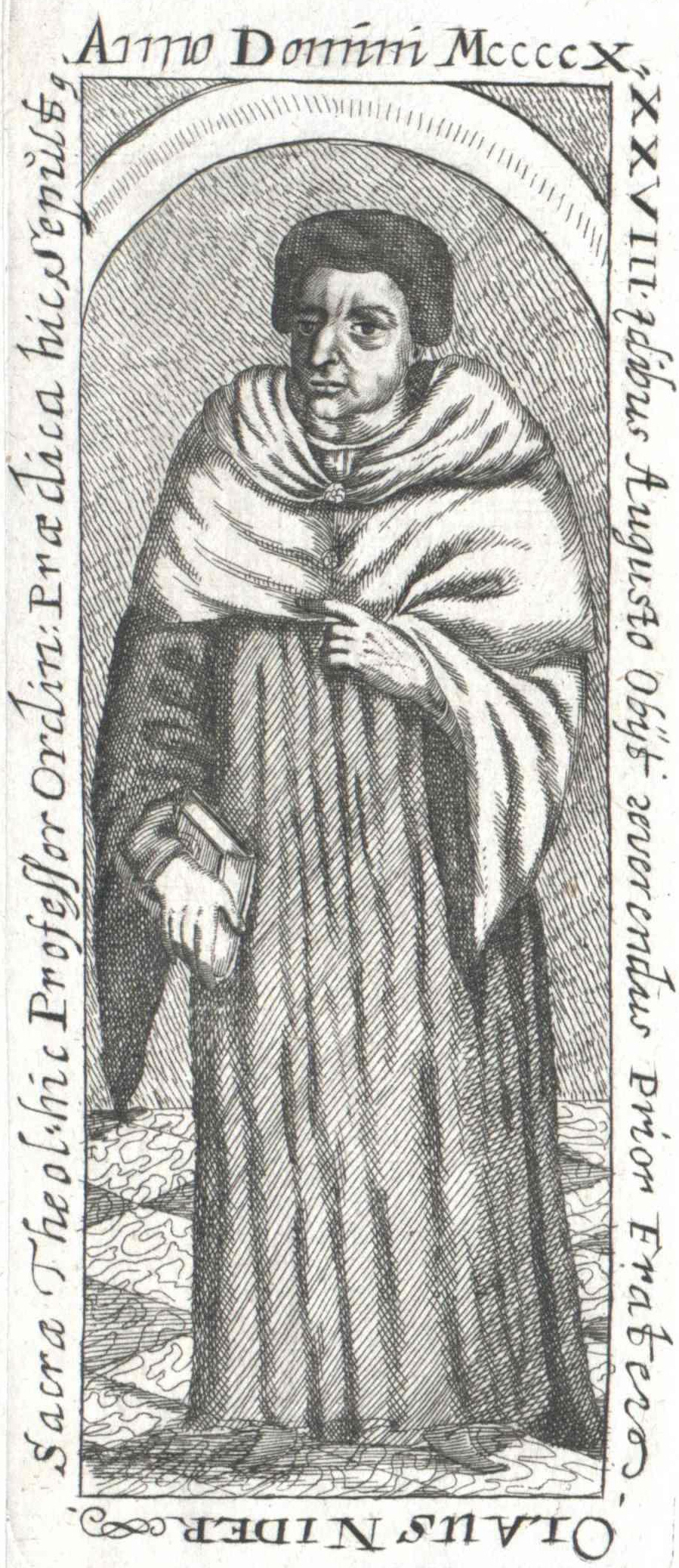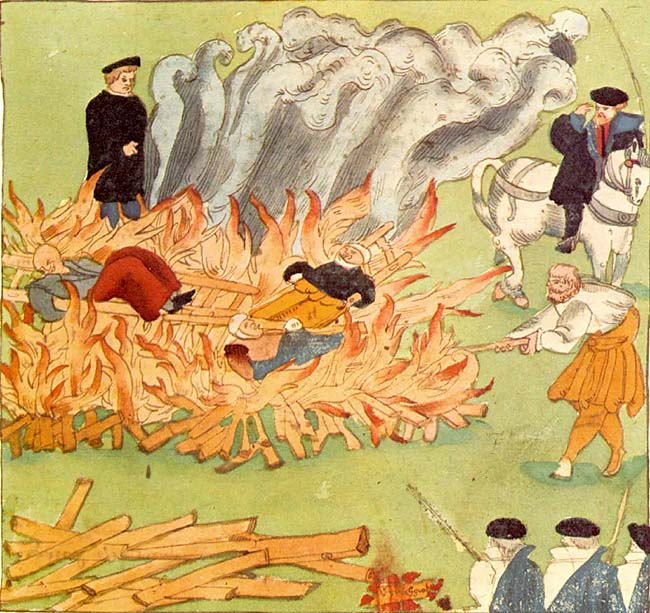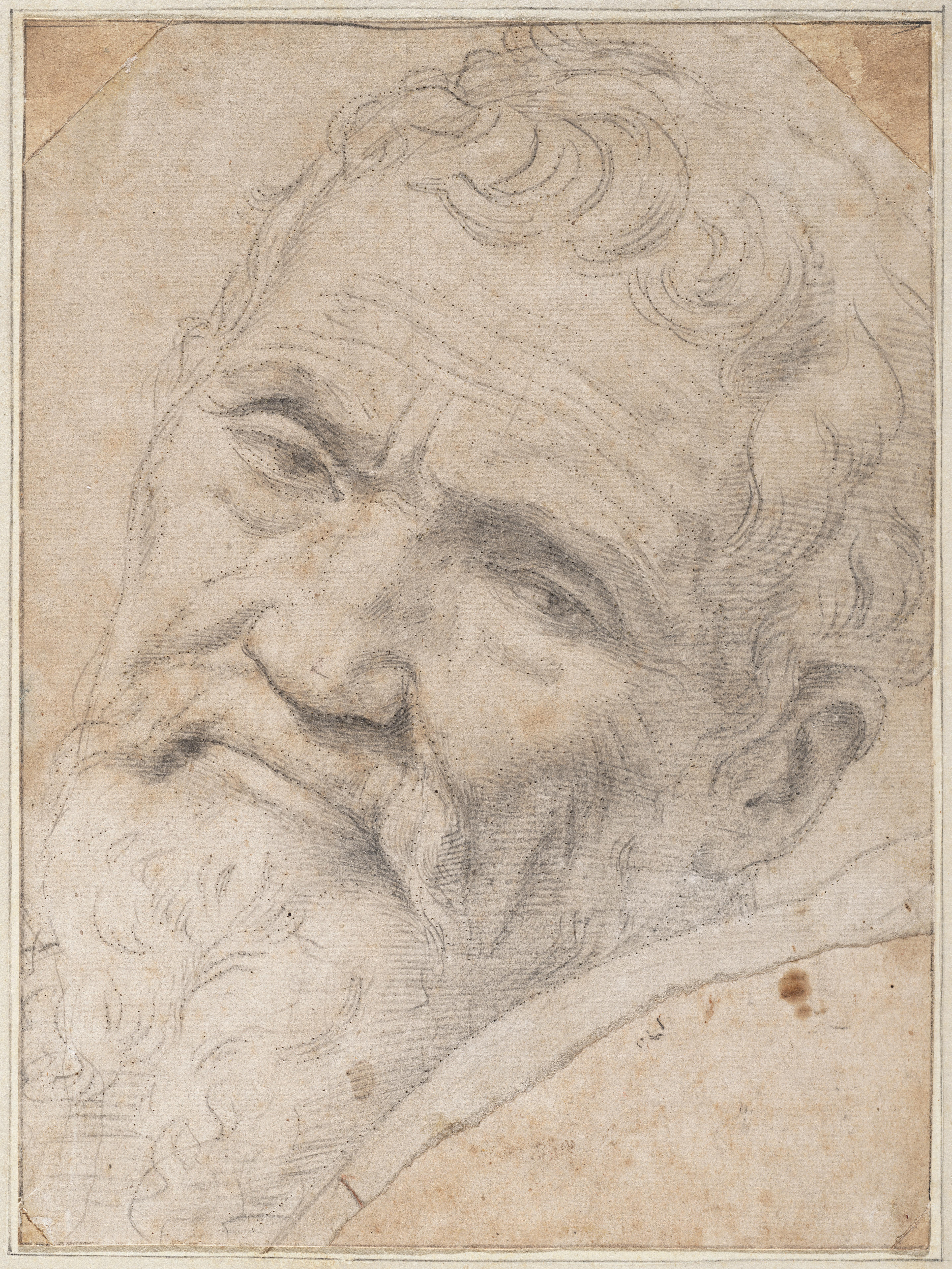|
Formicarius
The ''Formicarius'', written 1436–1438 by Johannes Nider during the Council of Florence and first printed in 1475, is the second book ever printed to discuss witchcraft (the first book being Alphonso de Spina's ''Fortalitium Fidei''). Nider dealt specifically with witchcraft in the fifth section of the book. Unlike his successors, he did not emphasize the idea of the Witches' Sabbath and was skeptical of the claim that witches could fly by night. With over 25 manuscript copies from fifteenth and early sixteenth century editions from the 1470s to 1692, the ''Formicarius'' is an important work for the study of the origins of the Witch trials in the early modern period, witch trials in Early Modern Europe, as it sheds light on their earliest phase during the first half of the 15th century. Nider was one of the first to transform the idea of Magic (supernatural), sorcery to its more modern perception of witchcraft. Prior to the fifteenth century, magic was thought to be performed ... [...More Info...] [...Related Items...] OR: [Wikipedia] [Google] [Baidu] |
Johannes Nider
Johannes Nider ( – 13 August 1438) was a German theologian. Life Nider was born in Swabia. He entered the Order of Preachers at Colmar and after profession was sent to Vienna for his philosophical studies, which he finished at Cologne, where he was ordained. He gained a wide reputation in Germany as a preacher and was active at the Council of Constance. After making a study of the convents of his order of strict observance in Italy he returned to the University of Vienna, where in 1425 he began teaching as Master of Theology. Elected prior of the Dominican Order, Dominican convent at Nuremberg in 1427, he successively served as ''socius'' to his Master of the Order of Preachers, master general and vicar of the reformed convents of the German province. In this capacity he maintained his early reputation of reformer and in 1431 he was chosen Prior (ecclesiastical), prior of the convent of strict observance at Basel. He became identified with the Council of Basel as theologian an ... [...More Info...] [...Related Items...] OR: [Wikipedia] [Google] [Baidu] |
Malleus Maleficarum
The ''Malleus Maleficarum'', usually translated as the ''Hammer of Witches'', is the best known treatise about witchcraft. It was written by the German Catholic Church, Catholic clergyman Heinrich Kramer (under his Latinisation of names, Latinized name ''Henricus Institor'') and first published in the German city of Speyer in 1486. Some describe it as the compendium of literature in demonology of the 15th century. Kramer presented his own views as the Roman Catholic Church's position. The book was condemned by top theologians of the Inquisition at the University of Cologne, Faculty of Cologne for recommending illegal procedures, and for being inconsistent with Roman Catholic doctrines of demonology. However, Kramer received praise for his work by Pope Innocent VIII in the papal bull Summis desiderantes affectibus. Kramer was never removed and even enjoyed considerable prestige thereafter. The ''Malleus'' calls sorcery Heresy in the Catholic Church, heresy, which was a crime at ... [...More Info...] [...Related Items...] OR: [Wikipedia] [Google] [Baidu] |
Praeceptorium Divinae Legis
''Praeceptorium divinae legis'', also known as ''Expositio decalogi'', is a moral theology treatise written by Johannes Nider (ca. 1380–1438). First published posthumously around 1474, this work is an exposition of the Ten Commandments, aimed at guiding Christians in ethical and spiritual living. Background Johannes Nider was an early 15th century Dominican theologian and reformer, known for his contributions to theology and his role in the Dominican Order. He authored several works, including the ''Formicarius'', which is considered foundational for Renaissance demonology. ''Praeceptorium divinae legis'' reflects Nider's commitment to moral reform and his crusade against vice, as he sought to address issues such as gluttony, greed, and lust through theological commentary. Summary of contents The treatise is structured around the Ten Commandments, providing detailed explanations and moral guidance for each. Nider uses examples from scripture, historical anecdotes, and th ... [...More Info...] [...Related Items...] OR: [Wikipedia] [Google] [Baidu] |
Stedelen
Stedelen (dead c. 1400) was a man who was accused of being a witch in Boltigen, Switzerland between 1397 and 1406. Background After the harvest had failed at his village, Stedelen was accused of using black magic to destroy the crops, killing cattle and also sacrificing a black rooster on the Sabbath at a crossroad and placing a lizard under the doorway of a local church. Peter von Greyerz, the judge of Simmental between 1398–1406, was a firm believer in witchcraft, which he believed had been introduced in Simmental by a noble man called Scavius in 1375, who claimed he could transform himself to a mouse (as recorded in Johannes Nider's seminal work ''Formicarius''). Scavius was slaughtered by his enemies, but he had a student, Hoppo, who, according to Greyerz, had been the tutor of Stedelen. There are no records about Hoppo, but Stedelen from Boltigen had allegedly been made an expert on magic by Hoppo, and supposedly learned to steal manure, hay and such from others' fie ... [...More Info...] [...Related Items...] OR: [Wikipedia] [Google] [Baidu] |
George Peabody Library
The George Peabody Library is a library connected to the Johns Hopkins University, focused on research into the 19th century. It was formerly the Library of the Peabody Institute of music in the City of Baltimore, and is located on the Peabody campus at West Mount Vernon Place in the Mount Vernon-Belvedere historic cultural neighborhood north of downtown Baltimore, Maryland. The collections are available for use by the general public, in keeping with the Baltimorean merchant and philanthropist George Peabody's goal to create a library "for the free use of all persons who desire to consult it". History The George Peabody Library was funded by George Peabody (1795–1869). Peabody, having become a wealthy man in Baltimore through commerce during the 1810s and 1820s, following his brief service in the state militia defending the city against the famous British attack during the War of 1812, "gave $300,000 as a beginning sum for the Peabody Institute" in February 1857. The institute ... [...More Info...] [...Related Items...] OR: [Wikipedia] [Google] [Baidu] |
1475 Books
Year 1475 ( MCDLXXV) was a common year starting on Sunday of the Julian calendar. Events January–December * January 10 – Battle of Vaslui (Moldavian–Ottoman Wars): Stephen III of Moldavia defeats the Ottoman Empire, which is led at this time by Mehmed the Conqueror of Constantinople. * July 4 – Burgundian Wars: Edward IV of England lands in Calais, in support of the Duchy of Burgundy against France. * August 29 – The Treaty of Picquigny ends the brief war between France and England. * November 13 – Burgundian Wars – Battle on the Planta: Forces of the Old Swiss Confederacy are victorious against those of the Duchy of Savoy, near Sion, Switzerland. * November 14 – The original Landshut Wedding takes place, between George, Duke of Bavaria, and Hedwig Jagiellon. * December – The Principality of Theodoro falls to the Ottoman Empire, arguably taking with it the final territorial remnant of the successor to the Roman Kingdom after n ... [...More Info...] [...Related Items...] OR: [Wikipedia] [Google] [Baidu] |
1430s Books
*
{{numberdis ...
143 may refer to: *143 (number), a natural number *AD 143, a year of the 2nd century AD *143 BC, a year of the 2nd century BC *143 (West Midlands) Brigade, UK Infantry unit *KiYa 143, a locomotive type * 143 Adria, a main-belt asteroid Film * ''143'' (2004 film), an Indian Telugu film * ''143'' (2022 film), an Indian Marathi film Music * 143 Records, record label of producer David Foster * ''143'' (Bars and Melody album), 2015 * ''143'' (Katy Perry album), 2024 * ''143'' (EP), a 2013 EP by Tiffany Evans * "1-4-3 (I Love You)", a 2013 song by Henry Lau from the EP '' Trap'' See also * " Case 143", a 2022 song by Stray Kids * List of highways numbered 143 The following highways are numbered 143: Canada * Prince Edward Island Route 143 * Quebec Route 143 Costa Rica * National Route 143 (Costa Rica), National Route 143 Germany * Bundesautobahn 143 Japan * Japan National Route 143 * Fukuoka Pr ... [...More Info...] [...Related Items...] OR: [Wikipedia] [Google] [Baidu] |
Joan Of Arc
Joan of Arc ( ; ; – 30 May 1431) is a patron saint of France, honored as a defender of the French nation for her role in the siege of Orléans and her insistence on the Coronation of the French monarch, coronation of Charles VII of France during the Hundred Years' War. Claiming to be acting under divine guidance, she became a military leader who transcended gender roles and gained recognition as a savior of France. Joan was born to a propertied peasant family at Domrémy-la-Pucelle, Domrémy in northeast France. In 1428, she requested to be taken to Charles VII, later testifying that she was guided by visions from the archangel Michael, Margaret the Virgin, Saint Margaret, and Catherine of Alexandria, Saint Catherine to help him save France from English domination. Convinced of her devotion and purity, Charles sent Joan, who was about seventeen years old, to the siege of Orléans as part of a relief army. She arrived at the city in April 1429, wielding her banner a ... [...More Info...] [...Related Items...] OR: [Wikipedia] [Google] [Baidu] |
Simme
The river Simme () is a tributary of the river Kander in the Bernese Oberland in the canton of Bern in Switzerland. It is approximately long and has a catchment area of . The river Simme begins at the Alpine lake of ''Flueseeli'' (lit.: "Little Lake of the Flue") () on the secluded Alpine meadow just above the ''Flueschafberg'' cliffs. But right afterwards, one level and lower, below the Flueschafberg cliffs, on the Alpine meadow called ''Rezliberg'', it converges with several creeks which have even higher springs, such as the Truebbach, the ''Rezligletscherbach'', and the ''Ammertenbach''. This area is located west of the mountain range Wildstrubel, and to the north of and below the Glacier de la Plaine Morte (), and about south of the resort of Lenk. Underneath the Rezliberg it forms the ''Simmenfälle'', several waterfalls, which have, altogether, a drop of . The river then flows roughly to the north and passes Lenk and flows towards Zweisimmen through the Obersimmental ... [...More Info...] [...Related Items...] OR: [Wikipedia] [Google] [Baidu] |
Rhineland
The Rhineland ( ; ; ; ) is a loosely defined area of Western Germany along the Rhine, chiefly Middle Rhine, its middle section. It is the main industrial heartland of Germany because of its many factories, and it has historic ties to the Holy Roman Empire, Prussia, and the German Empire. Term Historically, the term "Rhinelands" refers to a loosely defined region encompassing the land on the banks of the Rhine, which were settled by Ripuarian Franks, Ripuarian and Salian Franks and became part of Frankish Austrasia. In the High Middle Ages, numerous Imperial States along the river emerged from the former stem duchy of Lotharingia, without developing any common political or cultural identity. A "Rhineland" conceptualization can be traced to the period of the Holy Roman Empire from the sixteenth until the eighteenth centuries when the Empire's Imperial Estates (territories) were grouped into regional districts in charge of defense and judicial execution, known as Imperial Circ ... [...More Info...] [...Related Items...] OR: [Wikipedia] [Google] [Baidu] |
Austria
Austria, formally the Republic of Austria, is a landlocked country in Central Europe, lying in the Eastern Alps. It is a federation of nine Federal states of Austria, states, of which the capital Vienna is the List of largest cities in Austria, most populous city and state. Austria is bordered by Germany to the northwest, the Czech Republic to the north, Slovakia to the northeast, Hungary to the east, Slovenia and Italy to the south, and Switzerland and Liechtenstein to the west. The country occupies an area of and has Austrians, a population of around 9 million. The area of today's Austria has been inhabited since at least the Paleolithic, Paleolithic period. Around 400 BC, it was inhabited by the Celts and then annexed by the Roman Empire, Romans in the late 1st century BC. Christianization in the region began in the 4th and 5th centuries, during the late Western Roman Empire, Roman period, followed by the arrival of numerous Germanic tribes during the Migration Period. A ... [...More Info...] [...Related Items...] OR: [Wikipedia] [Google] [Baidu] |
Switzerland
Switzerland, officially the Swiss Confederation, is a landlocked country located in west-central Europe. It is bordered by Italy to the south, France to the west, Germany to the north, and Austria and Liechtenstein to the east. Switzerland is geographically divided among the Swiss Plateau, the Swiss Alps, Alps and the Jura Mountains, Jura; the Alps occupy the greater part of the territory, whereas most of the country's Demographics of Switzerland, 9 million people are concentrated on the plateau, which hosts List of cities in Switzerland, its largest cities and economic centres, including Zurich, Geneva, and Lausanne. Switzerland is a federal republic composed of Cantons of Switzerland, 26 cantons, with federal authorities based in Bern. It has four main linguistic and cultural regions: German, French, Italian and Romansh language, Romansh. Although most Swiss are German-speaking, national identity is fairly cohesive, being rooted in a common historical background, shared ... [...More Info...] [...Related Items...] OR: [Wikipedia] [Google] [Baidu] |


